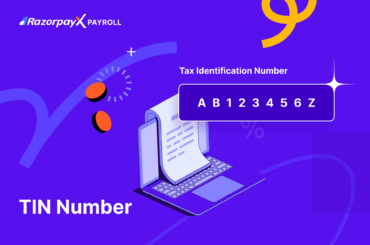Table of Contents
What is Statutory Compliance
Statutory compliance refers to following laws and legal framework of the state and nation. In HR and payroll, statutory compliance refers to the laws relating to employment and payroll.
tatutory compliance is the legal framework established by the government to regulate various aspects of business, from how it treats employees to overall financial practices.
All organisations, irrespective of their size and stature, must abide by the central and state labour laws, failing which strict legal actions can be taken against them.
Importance of Statutory Compliance
For employees
Statutory compliance helps employees in the following ways:
- Equal wages
- Fair treatment
- Appropriate working hours
- Assured minimum wages
- Social security
- Workplace security
For employers
Statutory compliance is beneficial to employers as well:
- Helps avoid penalties and lawsuits
- Helps avoid trade union issues
- Effective dispute resolution
- Harmonious work environment
- Good for brand reputation
Importance of Statutory Compliance in Payroll
Statutory compliance in payroll is crucial for both employers and employees. It ensures everyone plays by the rules set by the government. Here’s why it matters:
- Fairness and Protection: Compliance guarantees employees are paid minimum wage, receive overtime pay, and have proper deductions.
- Reduced Risk: Following the law protects companies from hefty fines, legal trouble, and reputational damage.
- Trust and Transparency: Compliance fosters a climate of trust between employers and employees, knowing everyone’s rights are respected.
Risk of non-compliance
Apart from being important from employee welfare perspective, there are actual risks of not adhering to statutory compliance laws:
- Damage to reputation, brand value and loss of business integrity
- Heavy penalties and fines
- Lawsuits and legal action by disgruntled parties – government agencies, employees or trade unions, or clients, among others
- Impact on customer loyalty of the organisation
- Unnecessary audits
Advantages of Statutory Compliance
Statutory compliance brings significant benefits to businesses:
Ensures retention of employees
The laws surrounding payroll and employment are designed to improve the working conditions of employees. When followed, they create a positive, happy workplace which makes it less likely for the employee to resign. This improves retention, which significantly boosts productivity in your business.
Protects business from legal action
If the laws and rules of the land are not followed, the business may become liable to pay fines, fees or may even result in imprisonment. Statutory compliance processes ensure this does not happen.
How can you ensure statutory compliance for your organisation?
1. Document all policies & procedures
Mention all the compliances in the employee handbook (digitally). This will ensure proof of all the rules and policies of the company for the benefit of both you as an organisation and your employees.
2. Stay updated on changing Acts and Policies
Compliance does not end at formulating policies and putting an Act in print/digital. Ensure that the Acts your company abides by are updated as per the norms of the Government to avoid being overwhelmed later.
Since staying updated with changing regulations can be tricky, check out software like RazorpayX Payroll that automatically gets updated if any law changes. A major benefit of using software is never being non-compliant, and the entire responsibility of compliance lies with the vendor, taking your headaches away.
[Suggested Read: Upgrade to a Dual Tax Regime Compliant Payroll Software]
3. Conduct compliance audits
Audits and reports can help you understand the compliance trends and practices in the organisation and find out just how compliant employees in your organisation are and how compliant the organisation is towards treating its employees.
4. Train employees
Workshops and training can help you mitigate the communication barrier when it comes to ensuring compliance at the employees’ and managerial end.
Statutory Compliance Checklist
Government rules for statutory compliance
1. Industrial Relations
The Industrial Disputes Act, 1947
Enacted in 1947, the Act extends to worker unions and individual employees employed in any industry across the country. The provisions of this Act are used to settle disputes between employees and their employers or between two employees. The Act, which is used to settle disputes within industrial establishments, aims at maintaining peace and harmony in such establishments in Indian industries.
It is important to note that this Act does not include people in administrative or managerial posts or the Defense forces under its purview.
2. Wages
The Payment of Wages Act, 1936
This Act guarantees the payment of wages to employees by the employer on time without any deductions other than those stated by the Government.
Employers are bound by this Act to provide employees their wages before the 7th of each month if the establishment has less than 1,000 employees or before the 10th of each month if they have more than 1,000 employees.
The Act does not apply to individuals with a monthly salary of Rs 10,000 or more. The Act also states that the payment of wages shall be made to the employee in cash. Should the employee agree in writing, the payment of wages can be made via cheque, DD, or bank transfer.
The Payment of Bonus Act,1965
This Act ensures that all employees get the annual bonus in certain establishments, industries, and factories with more than 20 employees. The amount of bonus is calculated with the profits made by the organisation and the employee’s salary. Employees with a salary of Rs 21,000 or less who are working with the organisation for more than 30 days are eligible for a minimum of 8.33% and a maximum of 20% of bonus.
Minimum Wages Act, 1948
The Act ensures the payment of a minimum wage or salary to both skilled and unskilled workers. Minimum wages are declared at the national, state, district, or occupational level and are determined by the cost of living in a region.
This Act prevents the exploitation of the workforce and mandates the employer to maintain payslips of the wages given to the employee.
3. Social Security
The Payment of Gratuity Rules, 1972
This Act promises gratuity and incentives to the employees working in a particular organisation. The Act applies to all establishments having more than 10 or more employees.
Gratuity is the amount that is deducted from the monthly wages of the employee and provided after the employee completes 5 years in the establishment for the services rendered by them during their employment.
[Suggested Read: Gratuity – Meaning, Formula, Calculation and Taxation Rules]
The Employees Compensation (Amendment) Act, 1923
This Act mandates the employer to inform the employee about his/her compensation before the commencement of employment. They must be informed about the risks, potential losses, and threats to life during employment. Any failure to do so can result in a penalty ranging from Rs 5,000 to Rs 50,000.
[Suggested Read: Salary Breakup – Salary Structure, Format, Calculation & More]
The Employees’ Provident Fund & Miscellaneous Provisions (Amendment) Act, 1952
This Act ensures the social welfare and security of the employee in an establishment and is applicable for establishments with over 20 employees. Both the employee and the employer are required to contribute the same amount to the employee’s provident fund account.
PF is calculated based on the employee’s basic salary and dearness allowance, while food allowance, HRA, bonus, and incentives are not included, and the basic monthly wage is Rs 15,000.
PF is divided into 2 funds: EPF (Employees’ Provident Fund) and EPS (Employees’ Pension Scheme). Following are the PF rates stated by the Government of India:
| Employee’s Contribution | Employer’s Contribution | |
| EPF | 12% of (Gross – HRA) | 3.67% |
| EPS | 0 | 8.33% |
| TOTAL | 12% | 12% |
| EXEMPTIONS | Not tax-exempt, but eligible for deduction under 80C | Tax exempt |
Any failure of the employer to comply with this Act can lead to a penalty of Rs 10,000 and up to 3 years imprisonment.
The Employees’ State Insurance ESI Act, 1948
The ESI Act ensures several medical benefits to employees in case of sickness, maternity, medical emergencies, and injuries who are employed in non-seasonal factories using power – with 10 or more workers – and factories without power – with 20 or more employees.
All medical benefits are provided to employees who earn up to Rs 15,000 as monthly wages in ESIC hospitals.
The Act is applicable in all states in the country except Manipur, Mizoram, Arunachal Pradesh, and Sikkim, and both the employer and employee are required to contribute to the scheme. The employer and employee percentages are as follows:
| Contribution | % of Gross salary |
| Employee’s contribution | 0.75% |
| Employer’s contribution | 3.25% |
Labour Welfare Fund Act, 1965
Labour welfare includes all the facilities for labourers that focus on the welfare of the labourers employed in different industries. The Act ensures that the working conditions of labourers are improved, they get social security benefits, and there is a marked increase in their standard of living.
State authorities enact this while the state labour welfare board determines the amount and frequency of contribution by the employer. For example, some states require an annual contribution by the employer, while some states have a semi-annual contribution requirement.
4. Women’s Benefits
Equal Remuneration Act, 1976
This Act ensures that there is no gender-based parity when it comes to wage payment by the employer, and there is equality in payment of wages to employees irrespective of their gender. Essentially, women must not receive lesser wages than men for the same work due to gender-based discrimination. Any non-compliance with this Act can result in penalties for the employer.
The Act was passed after several women complained of receiving lesser wages than their male counterparts for the same job and is applicable across establishments in the country.
Maternity Benefit Act, 1961
This Act benefits pregnant women employed in establishments across the country. The Act helps them secure jobs by providing certain months of paid leave during maternity to take care of their newborn child. It also ensures that women can come back to their jobs and resume work after maternity leave is over.
Read more: Maternity Leave
Statutory Compliance on Tax Liabilities
Tax Deducted at Source
Tax Deducted at Source or TDS is the collection of taxes right from the source of income. It is applicable on various kinds of incomes like rental income, salary income, etc. TDS is one of the most important statutory compliance that employers in India have to adhere to.
Tax rate for salaried individuals varies as per the regime selected by them. Tax rates and income slabs are different under both the regimes. Here is a quick snapshot:
TDS Rates under Old vs. New Tax Regime (FY 2024-25)
| Old Tax Regime | |
| Income Tax Slab | Income Tax Rate (for resident individuals age < 60 years) |
| Up to ₹ 2,50,000 | Nil |
| ₹ 2,50,001 – ₹ 5,00,000 | 5% |
| ₹ 5,00,001 – ₹ 10,00,000 | 20% |
| Above ₹ 10,00,001 | 30% |
| New Tax Regime | |
| Income Tax Slab | Income Tax Rate |
| Up to ₹ 3,00,000 | Nil |
| ₹ 3,00,001 – ₹ 7,00,000 | 5% (Tax rebate u/s 87A up to ₹ 7,00,000) |
| ₹ 7,00,001 – ₹ 10,00,000 | 10% |
| ₹ 10,00,001 – ₹ 12,00,000 | 15% |
| ₹ 12,00,001 – ₹ 15,00,000 | 20% |
| Above ₹ 15,00,001 | 30% |
*Surcharge and cess will be applicable over and above the tax rates
Corporate income tax rate for foreign companies is slashed from 40% to 35%. This is only applicable on income other than specific income (royalties, fees for technical services, etc.)
The tax rate is further subjected to surcharge (based on income level, 2% for income more than 1 Cr but less than 10Cr ; 5% for income more than 10 Cr) and health & education cess of 4% on the total tax and surcharge amount. This cess is a contribution towards India’s healthcare and educational initiatives.
Automate statutory compliance calculation & filing with RazorpayX Payroll
Since there are innumerable laws and Acts governing companies, the task can become overwhelming for the companies.
RazorpayX Payroll automatically calculates compliances such as PF, PT, TDS, and ESIC and files them for you. All you have to do is sign up.
Try RazorpayX Payroll for free!
Other features of RazorpayX Payroll include:
- Automatic salary calculation and disbursement
- Payroll execution in 3 clicks
- Leave and attendance management
- Insightful reports
- Automatic compliance calculation & filings such as PF, PT, TDS





